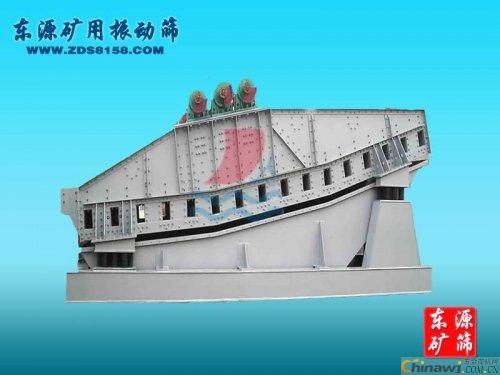Under alternating stress, even if the stress on a mining vibrating screen is below the yield limit, structural failure can occur over time due to fatigue. This phenomenon highlights the importance of evaluating the structure's strength under cyclic loading using the fatigue limit. Large-scale mining screens are complex to analyze through traditional elastic continuum methods, as they involve extensive computational efforts. By dividing the structure into sub-structures and applying the state space method, it becomes easier to study dynamic interactions and energy transfer between components, which is crucial for understanding vibration behavior and improving structural design.
The typical structure of a mining vibrating screen includes side plates, beams, spring supports, and other elements, often connected using fasteners like bolts, rivets, or welding. Dividing the entire system into sub-structures based on these components is both intuitive and practical, aligning with common engineering approaches. Transient dynamic analysis reveals that the joints between beams and side plates, as well as those between spring brackets and side plates, experience high stress and are prone to failure.
Additionally, since the side plates are large thin plates, insufficient stiffness during design or operation can lead to significant deformation under vibration. To address this, the side plates can be further subdivided into smaller sub-structures depending on their deformation characteristics. For example, areas with minimal deformation can be treated as rigid bodies, while regions with high deformation may be modeled with simplified sub-structures containing concentrated mass and elastic components for more accurate analysis.
Introducing the concept of power flow in mining vibrating screens was initially aimed at better describing the vibration isolation performance of the system. Since power flow involves energy transfer, it can also be used to assess the vibration strength of the structure. A higher input power flow to a sub-structure indicates a greater likelihood of damage, making power flow a useful metric for evaluating both strength and energy transmission characteristics.
Power flow is a scalar quantity and can be positive or negative depending on the location on the vibrating screen. When power flow is negative, it means the component is absorbing energy during that period, acting as a damping element. This characteristic helps in understanding how energy is dissipated within the system.
During operation, the spring bracket is directly in contact with the spring and experiences significant loads, including the spring's support force and the forces and moments from the side plate. From early-time history analysis, it is evident that the spring bracket experiences high stress. If it fails—such as cracking or breaking—the vibrating screen will not function properly, making it a critical component. Therefore, analyzing its energy distribution and power flow is essential. Below is the calculation of power flow for the spring bracket.

Battery Spring,Customized Battery Springs,Battery Spring Sorting,Battery Spring Processing
Dongguan Jiufukai Hardware Products Co., Ltd , https://www.jfkspring.com
